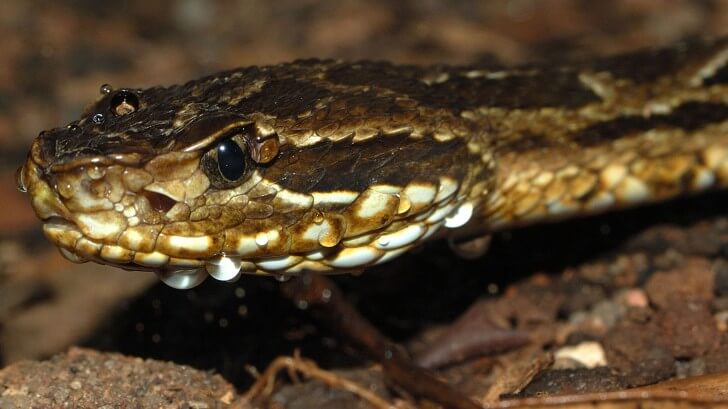BBC Earth newsletter
BBC Earth delivered direct to your inbox
Sign up to receive news, updates and exclusives from BBC Earth and related content from BBC Studios by email.
Health
The dangers of venoms are well documented, but these deadly toxins can also save lives.
Toxicologist Dr Zoltan Takacs says: "Venom toxins are the only molecules on Earth explicitly selected by evolution to take a life in less than one minute.”

In a 2015 article published in the New Zealand Herald, David Warrell, a tropical medicine specialist at Oxford University, estimated that 200,000 deaths a year were caused by snakebites.
The development of new antivenom is an ongoing struggle, however researchers have found that the toxins found in venoms can also aid in treating other medical conditions and several venom-based drugs are already in use.
Here are four species whose venoms are being used to benefit humankind.
Snake venom is a term that covers a wide array of different venoms. Some kill quickly while others take time.
Most snakes deliver their poison through fangs that operate in a similar method to a syringe. Once the fang has pierced their victims flesh, the poison is delivered through the tooth and directly into the prey’s bloodstream. The exceptions to this are snakes who spit their venom, like the Mozambique spitting cobra (Naja mossambica).
Since there is such a variety in the venoms, the potential medical applications differ from snake to snake. Coronary medical conditions are a field where solutions involving toxins taken from snakes are currently employed.
“Snake venoms served as templates for some of the top medicines used in high blood pressure, heart failure, and heart attack,” explains Takacs.
“The source of the angiotensin-converting enzyme (ACE) inhibitor class of medicines, the Jararaca pit viper snake (Bothrops jararaca), arguably has saved more human lives than any other animal in the history of mankind.”
The Jararaca pit viper snake arguably has saved more human lives than any other animal in the history of mankind”

The venom gland of a Komodo dragon works differently to that of a snake. Instead of the snake’s syringe-like action, Komodo dragons use an oozing method of delivery. Venom is squeezed out of multiple ‘sacks’ between the dragon’s teeth when its jaw clamps down onto its prey. The venom mixes with the prey’s blood and prevents it from clotting. This is why their prey continues to bleed out after the attack. While deadly to prey, the anticoagulant properties of this venom is key to its potential medical uses. These toxins have applications in treating strokes, heart attacks and pulmonary embolisms, all of which can stem from blood clots.

Over 1.2 million people are stung by scorpions each year, resulting in around 3250 deaths according to a 2008 study. Aside from its terrifying name, the deathstalker scorpion (Leiurus quinquestriatus) could play an important role in treating cancer, as reported by CBS News. The deathstalker’s potent venom contains a toxin called Chlorotoxin which is being developed to diagnose cancers and in delivery systems for treating tumours.

Venoms are not normally found in mammals, and while this shrew’s venom isn’t strong enough to kill a human, it will cause pain and swellings.
This venomous shrew may have failed to grab the public imagination, but it has seized the interests of the scientific community. The reason: its venom is being explored for use in treating cancer.
Takacs says this is possible because some tumor cells express a molecule that’s structure closely resembles the natural target of the toxin.
“By piggy-backing this resemblance, it plausible to turn a toxin into a therapeutic or diagnostic agent for cancer.”
Featured image by Digital Vision | Getty